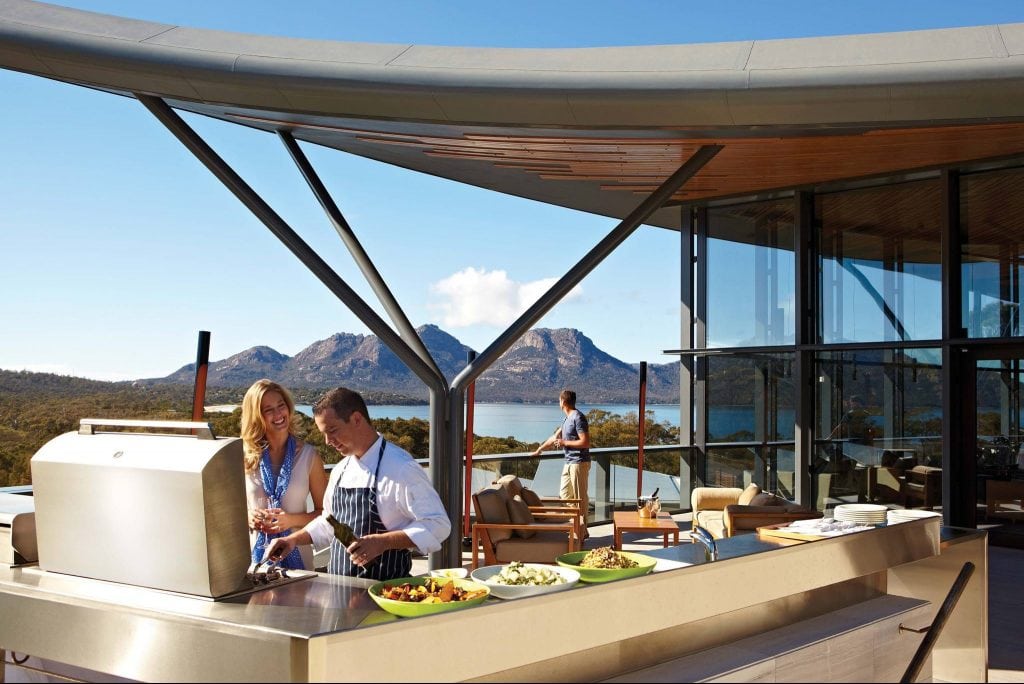Skift Take
Webjet Limited has risen as a major online travel agency in Australia and the No. 2 bedbank player globally. But stiff competition among online players down under, a slowdown in cruise sales, and low bedbank margins will keep it on its toes.
Business has been soaring for Webjet Limited, which rose from a $200 million to $2 billion company in the last eight years under the leadership of managing director John Guscic.
The Australian-listed digital travel company, which operates wholesale and consumer businesses, reported a 54 percent increase in total sales to $2.1 billion in fiscal year 2018. Earnings rose 71 per cent to $62.3 million.
Guscic told Skift in an interview there are “huge runways of growth ahead” for both sectors. The B2C arm, comprising Webjet.com.au and Online Republic, will continue to outperform the market by more than three times in fiscal year 2019, while the B2B bedbank, WebBeds, five times the market rate, according to Guscic.
Observers however said it won’t all be blue skies.
Australia’s online travel space is competitive and Webjet’s website traffic is still behind Expedia, according to year to November 2018 data by SimilarWeb, which tracks website performance.
Expedia.com.au gets on average 1,064,100 monthly visits, while Webjet.com.au, 911,300. Albeit, people visit Webjet longer at 12 minutes on average, compared with eight minutes for Expedia, while its bounce rate was lower at 17 per cent than Expedia’s 29 per cent.
Worrisomely, SimilarWeb saw desktop traffic to Webjet from Australia decreased 13 percent in January and November 2018 over the same time period in 2017. The decline was particularly pronounced in the first half of 2018, according to SimilarWeb marketing insights manager, Liron Hakim Bobrov.
A reason could be that more traffic was coming to the online travel agency on mobile than desktop. In November 2018, 65 percent of all traffic to Webjet came from its mobile web, said Bobrov. SimilarWeb’s data for mobile web traffic in Australia became available only recently, thus it was not able to make comparisons with previous years.
Slowdown in cruise sales
Guscic waived away questions on competition with Expedia.com.au, saying the company is focused on its promise to shareholders to grow over three times faster than the market rate.
Australia’s domestic travel market is growing at 2.5 percent, while international travel is rising faster at 4.1 percent, he said.
“The Australasian market has been great for a long time, and continues to be strong,” said Guscic. “Australians and New Zealanders have a voracious appetite to travel, in particular a sense of entitlement to travel overseas. We’ve seen a big uplift in international bookings as a consequence. That will continue for the foreseeable future.”
According to the Australian Federation of Travel Agents, Australians made a total of 11 million international trips last year, an increase of 4.3 percent. Their top five overseas destinations were New Zealand, Indonesia, the U.S., the UK and China.
But a slowdown in cruise sales in Australia is a real blip as the company looks to boost ancillary revenues over flight revenues.
While it boasts a 50 percent share of all online flight ticket sales in Australia today, fact is, air seats offer lower margins than ancillary products.
This was why Webjet acquired New Zealand’s Online Republic, an aggregator of online car rental, motor home and cruise bookings, in 2016. Aside from generating sales on its own website (some $223 million in fiscal year 2018), Online Republic enables Webjet.com.au to cross-sell those ancillary products and broaden its offerings.
As a result, in fiscal year 2018, ancillary revenues, which also included packages, insurance and hotels, accounted for 27 percent of the online travel agency’s revenue, from 20 percent in fiscal year 2017. The majority, 73 percent, was flights.
Had it not been for a “significant” slowdown in cruise sales, the balance between ancillary and flight revenues might be more to Guscic’s liking.
He blamed the slowdown to port constraints in Australia which have reduced double-digit growths of the cruise industry in previous years to single digit increases. He expects the market to rebound this year with the construction of Brisbane’s new cruise terminal, which could attract the world’s largest ships, at 270 m or longer.
The port, however, is scheduled to be in operation only from mid-2020.
Not interested to close wide gap with Hotelbeds
In the wholesale arena, Guscic is also not interested in closing the gap with Hotelbeds, which is by far the biggest bedbank player after WebBeds.
“Our focus is not on one particularly competitor, who also happens to be a supplier to us. Our focus is on the enormous bedbank market, which is a $50 billion market, and we’re on track on a pro forma basis with the acquisition of Destinations of the World to deliver north of A$1.4 billion ($1 billion) in 2019.
“We’re number two, we have four percent marketshare, so there’s another 96 percent, which is what we want to address,” said Guscic.
He recalled with amazement the date February 13, 2013, when WebBeds’ sales in its first month of operation were just over $9,000 and how now, in five years, it is $1 billion.
But though it’s a high transaction volume business, observers point out the business is so low margin.
A Webjet AGM presentation last November 21 clearly shows this. Webjet and WebBeds brought in roughly the same amount of sales of a little over $1 billion each. But the online travel agency roped in earnings of $42 million, while the bedbank not even half that, at $19 million.
Bed banks rely on a small markup on rates to make a buck. Direct contracts with hotels, which offer higher margins, are costly to due to the massive number of contracting staff and time involved.
With the acquisition of Destinations of the World last year, JacTravel in 2017 and setting up its own FITRuums in Asia, WebBeds now has 28,500 direct contracts. It is targeting 35,000 direct contracts by fiscal year 2021.
“If we can add 3,000 to 5,000 directly contracted hotels a year, clearly we could achieve the midterm aim of getting 35,000 by fiscal year 2021. But we never want to get to a complete dependence on direct contracts [which is the model of Hotelbeds] as we believe that makes the organization a high-cost model, which we’re not interested in pursuing.
“We want the balance of having directly contracted hotels and partnering with third parties to drive the depth and breadth of the inventory that our customers need,” said Guscic.
WebBeds will no longer be pursuing acquisitions of bedbank players since “it’s entirely feasible for us to grow five times the market rate and deliver that financial objective without making further acquisitions,” he said.
But some continue to wonder if the bedbank business even have a future, given the shift in consumer behavior towards self planning and booking online.
In one response to Skift’s article posted on Linked In, on Webjet’s purchase of Destinations of the World, Max Starkov, founder and director of New York-based HEBS Digital, wrote, “I wonder who is the genius advising the investors in the bedbank sector? How a B2B bedbank like WebBeds or Hotelbeds could possibly have any bright future when the world of traditional intermediaries is being decimated? Consumers’ travel planning and booking behaviors have shifted irreversibly toward online Do-It-Yourself and away from using brick-and-mortar intermediaries.
“The number of travel agencies in the UK declined by 20 percent in just the last five years. Similar is the situation in Canada, Australia, all over Europe and Asia-Pacific. In the US alone, the number of travel agencies declined from 35,000 back in 1995 to less than 11,300 today.”
Another wrote, “How can a bedbank like WebBeds with [over] 28,000 contracted hotels compete with an OTA like Booking.com with its one million contracted hotels?”
That, is another story, with an inconclusive ending at the moment.
The Daily Newsletter
Our daily coverage of the global travel industry. Written by editors and analysts from across Skift’s brands.
Have a confidential tip for Skift? Get in touch
Tags: australia, online travel, webjet
Photo credit: Luxury Lodges of Australia. Domestic travel is rising but international trips rising faster. Luxury Lodges of Australia

